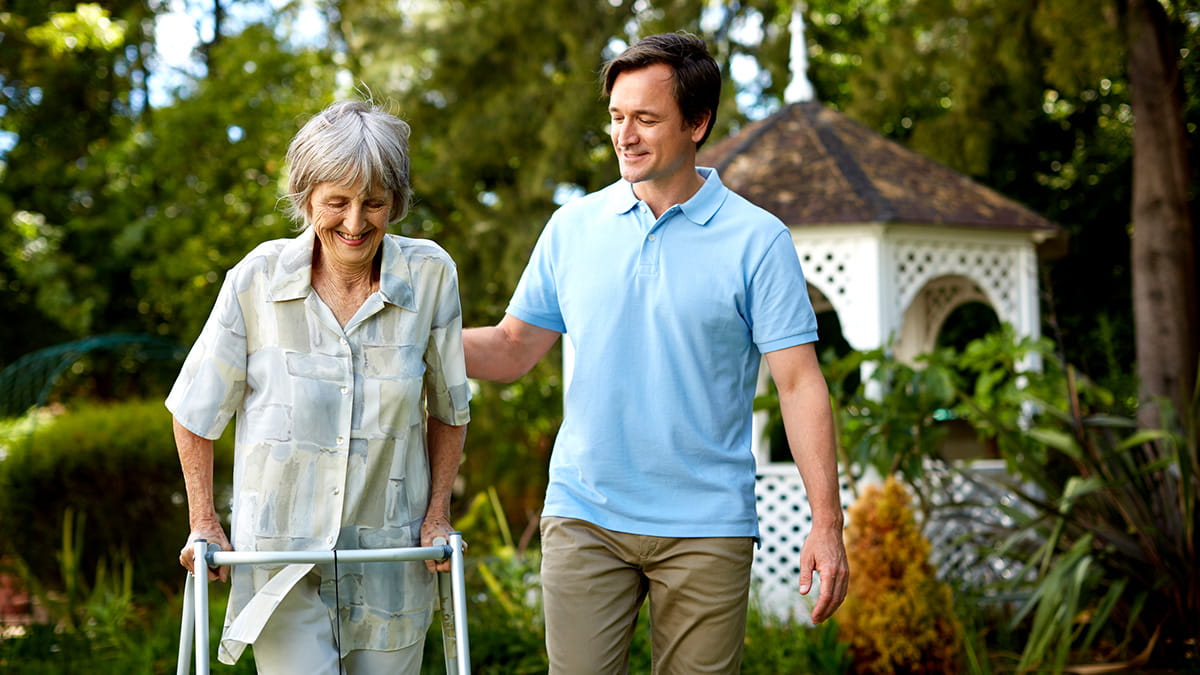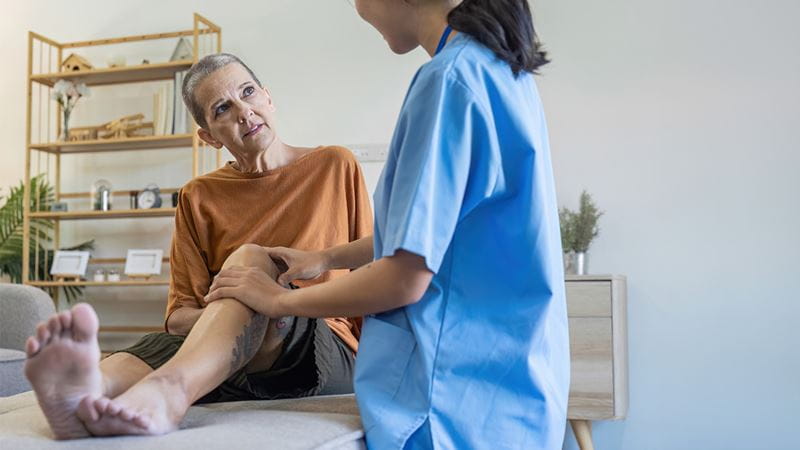Blog article
Osteoarthritis: Symptoms, causes, and treatment options

Osteoarthritis might not be life-threatening – but it can be life-changing.
The most common form of arthritis in Australia, osteoarthritis effects nearly 10% of the population or 2.1 million people.1 Most often experienced in the knees, hips and hands, osteoarthritis causes joints to become painful and stiff, limiting movement.2
In this blog, we break down what osteoarthritis is, how it’s different from other joint and bone conditions, and what treatment options are available to help you keep moving.
What is osteoarthritis?
Did you know osteoarthritis affects the entire joint – not just the cartilage? It can involve:3
- Inflammation in the tissues surrounding the joint
- Damage to the cartilage that cushions the ends of bones
- Bony growths (spurs) forming around the joint
- Deterioration of the ligaments and tendons that support movement
Once considered simple “wear and tear,” osteoarthritis is now thought to be the result of a joint working overtime to repair itself.3
Osteoarthritis symptoms
Symptoms of osteoarthritis often start gradually and worsen over time. You might notice:2,4
- Joint pain during or after movement
- Stiffness, especially in the morning or after resting
- A grating or crackling sensation when you move
- Swelling around the joint
- Loss of flexibility or range of motion
The symptoms can range from mildly annoying to severely disabling, depending on how much damage has occurred.
What causes osteoarthritis?
Several factors can increase your risk of osteoarthritis, including:2,3,4
- Age: The risk increases as you get older
- Joint injury: Past injuries – even ones that seemed minor at the time – can lead to osteoarthritis later on
- Repetitive stress: Jobs or activities that put ongoing pressure on a joint
- Excess weight: Extra kilos mean more stress on weight-bearing joints
- Genetics: It can run in families
- Bone deformities: Some people are born with poorly formed joints or defective cartilage
- Gender: Women are more likely to develop osteoarthritis
Osteoarthritis treatment options
Unfortunately, there’s no cure for osteoarthritis. Fortunately, however, the right mix of treatments can help you manage pain, stay active, and improve your quality of life.2,3,4
Lifestyle and self-care
- Stay active with regular, low-impact exercise like walking, swimming, or cycling.
- Manage your weight to reduce stress on joints like your knees, hips, and lower back.
- Apply heat or cold packs to relieve discomfort and swelling.
Medications and pain relief
- Paracetamol
- NSAIDs (non-steroidal anti-inflammatory drugs), like ibuprofen, may be used as a cream/gel on painful joints or taken as tablets. Always talk to your doctor first, as they can have side effects.
- Corticosteroid injections as advised by your doctor may offer short-term relief (usually two to four weeks) during an osteoarthritis flare, but they should only be considered after other options like exercise, physiotherapy and oral medications have been tried. Repeated use is discouraged, as some studies suggest it may speed up joint damage over time.7
Supportive therapies
- Physiotherapy or exercise physiology can help build a tailored program to strengthen muscles and improve mobility.
- Walking aids, braces, or custom shoe inserts may help reduce strain on affected joints. An occupational therapist can offer advice on tools to make everyday tasks easier.
Surgery
If other treatments aren’t helping and symptoms significantly affect your quality of life, your doctor may refer you to an orthopaedic surgeon. In some cases, joint replacement surgery (such as a total knee replacement) may be recommended. Surgery isn’t for everyone, and it’s important to understand the risks, benefits, and recovery process before deciding.
Osteoarthritis vs rheumatoid arthritis: What’s the difference?
Osteoarthritis involves the gradual breakdown of the entire joint – including cartilage, bone, and surrounding tissue – often due to the joint overworking to repair itself, while rheumatoid arthritis is an autoimmune disease where the immune system attacks the joint lining, leading to pain, swelling, and long-term joint damage.5
While both cause joint pain and stiffness, rheumatoid arthritis is also usually more symmetrical (affecting the same joints on both sides of the body).5
Osteoporosis vs osteoarthritis: What’s the difference?
While osteoarthritis affects our overall joints, osteoporosis affects our bones themselves – making them fragile, less dense, and more likely to break with even minor falls or injuries.6
Both osteoporosis vs osteoarthritis more common with age, but they impact different parts of the body and require different approaches to treatment.
Osteoarthritis knee: Why knees are commonly affected
Our knees do a lot of heavy lifting. As one of the body’s primary weight-bearing joints, they’re especially vulnerable to osteoarthritis – particularly if you’re active, overweight, or have experienced knee injuries.2,3,4 Knee osteoarthritis can make everyday tasks like walking, climbing stairs or getting out of a chair painful and difficult.
While surgery might sound like a quick fix, it’s not always the best path forward. In fact, for people without persistent locking, a knee arthroscopy is often no more effective than non-surgical care9 and may significantly increase the risk of needing a knee replacement.10
Experiencing osteoarthritis? A knee arthroscopy may not be the answer
How can HBF help with osteoarthritis?
If you need joint replacement surgery, HBF is here to help. Log in to myHBF or call 133 423 to check your level of cover and find a specialist using our Find a Provider tool.
The GLA:D® Program: Delivered in partnership with HBF Physio and other approved program providers, the GLA:D® Program is designed to help eligible members reduce pain, improve strength and move more confidently. Evidence has shown participants experience an average pain reduction of 33% after completing the program.8*
Osteoarthritis Healthy Weight for Life: Delivered in three phases, this 18-week program is designed to promote long-lasting behaviour change, supporting weight loss, increased mobility and better pain management for eligible members.**
HBF extras cover: Eligible extras cover can pay benefits towards professionals like physiotherapists, dietitians, and more, which may help you to manage your osteoarthritis.



